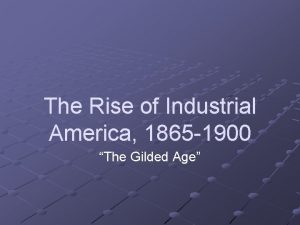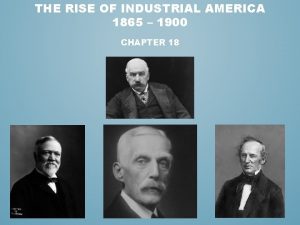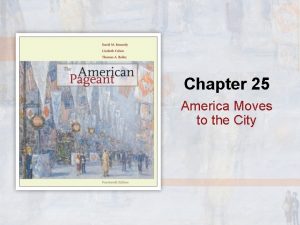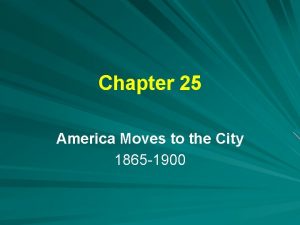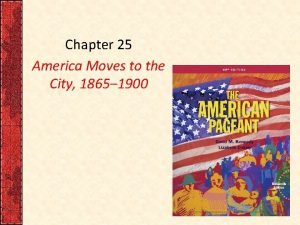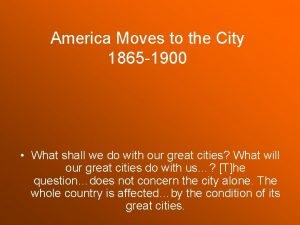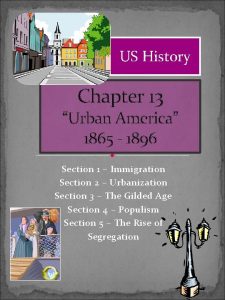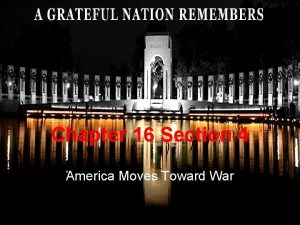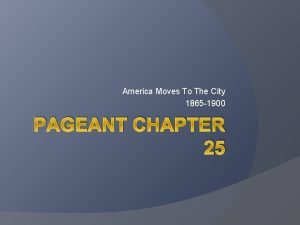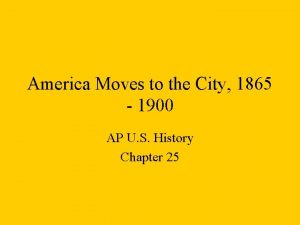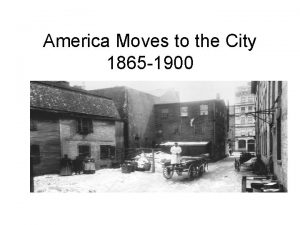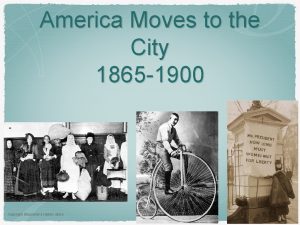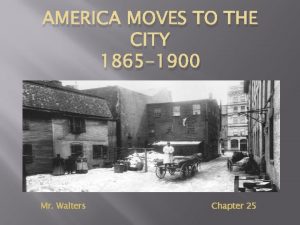America Moves to the City 1865 1900 Chapter









- Slides: 9

America Moves to the City 1865 -1900 Chapter 25 AMH 2020 Derek Wingate

Themes • America moves to the cities • New Immigration • Women

The Urban Frontier • From 1870 to 1900, the American population doubled, and the population in the cities tripled. • Department stores like Macy’s (in New York) and Marshall Field’s (in Chicago) provided urban working-class jobs and also attracted urban middle-class shoppers. • In cities, criminals flourished, and impure water, uncollected garbage, unwashed bodies, and droppings made cities smelly and unsanitary. • To escape, the wealthy of the city-dwellers fled to suburbs.


The New Immigration • Many Europeans came to America because there was no room in Europe, nor was there much employment, since industrialization had eliminated many jobs. • However, it should be noted that many immigrants to America stayed for a short period of time and then returned to Europe, and even those that remained (including persecuted Jews, who propagated in New York) tried very hard to retain their own culture and customs. • However, the children of the immigrants sometimes rejected this Old World culture and plunged completely into American life.


Reactions to the New Immigration • The federal government did little to help immigrants assimilate into American society, so immigrants were often controlled by powerful “bosses” who provided jobs and shelter in return for political support at the polls. • Among the people who were deeply dedicated to uplifting the urban masses was Jane Addams, who founded Hull House in 1889 to teach children and adults the skills and knowledge that they would need to survive and succeed in America. • She eventually won the Nobel Peace Prize in 1931.

Narrowing the Welcome Mat • The “nativism” and anti-foreignism of the 1840 s and 1850 s came back in the 1880 s, as the Germans and western Europeans looked down upon the new Slavs and Baltics, fearing that a mixing of blood would ruin the fairer Anglo-Saxon races and create inferior offspring. • Anti-foreign organizations like the American Protective Association (APA) arose to go against new immigrants, and labor leaders were quick to try to stop new immigration, since immigrants were frequently used as strikebreakers. • Ironically in this anti-immigratnt climate, the Statue of Liberty arrived from France—a gift from the French to America in 1886.

Families and Women in the City • Feminists also rallied toward suffrage, forming the National American Woman Suffrage Association in 1890, an organization led by Elizabeth Cady Stanton (who’d organized the first women’s rights convention in 1848 at Seneca Falls, NY) and Susan B. Anthony. • By 1900, a new generation of women activists were present, led by Carrie Chapman Catt, who stressed the desirability of giving women the vote if they were to continue to discharge their traditional duties as homemakers in the increasingly public world of the city.
 The rise of industrial america 1865-1900
The rise of industrial america 1865-1900 Four features of industrial manufacturing (1865-1900)
Four features of industrial manufacturing (1865-1900) 1865 to 1900 inventions
1865 to 1900 inventions Chapter 25 america moves to the city
Chapter 25 america moves to the city Chapter 25 america moves to the city
Chapter 25 america moves to the city Chapter 25 america moves to the city
Chapter 25 america moves to the city America moves to the city
America moves to the city America moves to the city
America moves to the city Urban america 1865 to 1896
Urban america 1865 to 1896 America moves toward war
America moves toward war
